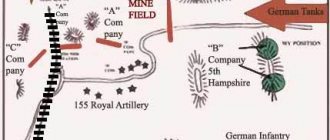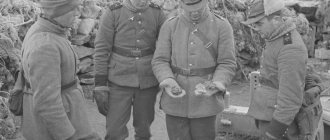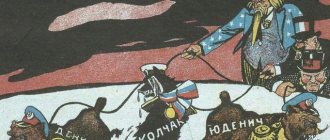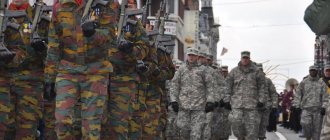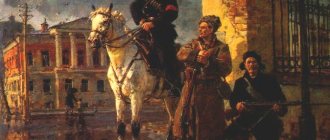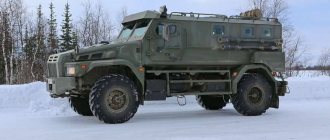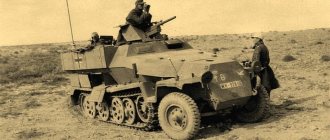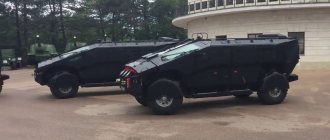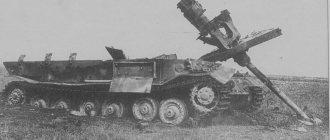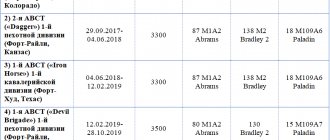armored car
FAI/BA-20, 1934–1942, weight - 1.75–2.32 tons. 2705 copies of all modifications were produced.
Armor - 4–9 mm, armament - 7.62 mm machine gun. Chassis - GAZ-A, GAZ-M1, 3.3 liter engine, 40-50 hp, maximum speed - 80-90 km/h. There were modifications for movement on rails. FAI/BA-20, 1934–1942, weight - 1.75–2.32 tons. 2705 copies of all modifications were produced. Armor - 4–9 mm, armament - 7.62 mm machine gun. Chassis - GAZ-A, GAZ-M1, 3.3 liter engine, 40-50 hp, maximum speed - 80-90 km/h. There were modifications for movement on rails.
German tanks of the second world war
In our minds, the idea is firmly established that the German army of the Second World War is entirely a high-tech and modern fighting machine, where soldiers do not even walk, but only cut through tanks and armored personnel carriers. The reality, of course, is not like the truth. And the artillery was almost entirely horse-drawn, and the Wehrmacht didn’t have many tanks before the war. The reason for success is not in quantity, but in quality, and here the Germans cannot be denied - they used tanks skillfully and competently.
German light tank Pz. I
In total, as of 1939, the number of German tanks was determined to be 5420 vehicles . Not a little, but not a lot either, when compared with fifteen thousand Soviet cars. Of this number, only a tenth - 533 tanks were armed with guns of a caliber greater than 37 mm.
The German tank forces of this period consisted mainly of light and compact Pz-I and Pz-II tanks, however, the strategy of lightning war - “blitzkrieg” itself did not involve the use of a large amount of heavy equipment. The main task of the Wehrmacht, to put it simply, was to, as quickly as possible and without engaging in protracted battles, penetrate into the depths of the enemy’s territory, bypassing fortified areas along the way, and end up in his rear faster than he could figure out what was going on. For such a task, even frankly weak “ones” and “twos” were perfect.
German light tank Pz. II
By the end of 1939, Germany’s tank power had “increased” with 219 Czech Pz Kpfw 35(t) and another 150 Pz Kpfw 38(t) tanks . These were completely new vehicles, armed with 37 mm cannons. It was simply impossible to wish for a better gift - at some point the number of Czech tanks in the service of the Wehrmacht was almost 10% of all available!
However, what worked perfectly in Europe was completely unsuitable for the realities of 1941. Autumn buried hopes for a blitzkrieg, and the old tactics and the main basis of its power - light tanks - were no good against the Soviet T-34s and the enormous distances of the Soviet Union.
German medium tank pz III
The year 1942 was a turning point - Germany began to intensively build heavy, well-armored combat vehicles, increasing production every month, but the Nazis realized it too late. By 1943, tank production figures were 5 times higher than in 1941; in 1944, at the peak of production, approximately 30,000 combat vehicles rolled off the assembly line.
German heavy tank pz IV
Even in 1945, a country subjected to constant bombing, in need of literally everything, and torn apart by the war, managed to issue 5,592 tanks, but this could no longer save the situation.
Again, as in the beginning, we can understand whether this is a lot or a little only by comparing them.
In total, during the Second World War, German factories produced 89,000 tanks of all types - light, medium and heavy. By this time, the Soviet Union had produced 125,000 combat vehicles, the USA almost 50,000, and Great Britain about 24,000...
German heavy tank pz V "Panther"
Wehrmacht tanks of the Second World War
| Before 1939 | 1939 | 1940 | 1941 | 1942 | 1943 | 1944 | 1945 | Total | |
| Neubaufahrzeuge* | 3 | — | — | — | — | — | — | — | 3 |
| Pz Kpfw I | 1493 | — | — | — | 70 | — | — | — | 1563 |
| Pz Kpfw II | 1001 | 246 | 9 | 236 | 322 | — | — | — | 1814 |
| Pz Kpfw 35(t) | — | 219 | — | — | — | — | — | — | 219 |
| Pz Kpfw 38(t) | — | 150 | 370 | 698 | 193 | — | — | — | 1411 |
| Pz Kpfw III (All modifications) | 71 | 206 | 916 | 1998 | 2693 | 265 | 8 | — | 6157 |
| Pz Kpfw IV (All modifications) | 115 | 141 | 278 | 467 | 1019 | 3013 | 3126 | 385 | 8544 |
| Pz Kpfw V (Panther) | — | — | — | — | 1768 | 3749 | 459 | 5976 | |
| Pz Kpfw VI "Tiger" (including Tiger-Porsche) | — | — | — | — | 89 | 647 | 623 | — | 1359 |
| Pz Kpfw "Tiger II" (Royal Tiger) | — | — | — | — | — | 377 | 112 | 489 | |
| Pz Kpfw M13/40 and M14/41(i) | — | — | — | — | — | 23 | — | — | 23 |
| Pz Kpfw M15/42(i) | — | — | — | — | — | 90 | — | — | 92 |
| Pz Kpfw P40(i) | — | — | — | — | — | 5 | 100 | — | 105 |
| Total | 2683 | 962 | 1573 | 3399 | 4386 | 5813 | 7983 | 956 | 27683 |
* Experimental heavy German tank.
Wehrmacht command tanks
| Before 1939 | 1939 | 1940 | 1941 | 1942 | 1943 | 1944 | 1945 | Total | |
| Pz BefWg * | 216 | 44 | 34 | 139 | 131 | 134 | 41 | — | 739 |
* all modifications, including vehicles based on the Italian M4I and M42
| Before 1939 | 1939 | 1940 | 1941 | 1942 | 1943 | 1944 | 1945 | Total | |
Tank destroyers | |||||||||
| Pz Jag "Ferdinand" | — | — | — | — | — | 90 | — | — | 90 |
| Jagdpanzer 38(t) | — | — | — | — | — | — | 1457 | 1127 | 2584 |
| Jagdpanzer IV | — | — | — | — | — | — | 769 | 769 | |
| Pz IV/70(V) | — | — | — | — | — | — | 560 | 370 | 930 |
| Pz IV/70(A) | — | — | — | — | — | — | 207 | 71 | 278 |
| "Jagdpanther" | — | — | — | — | — | — | 226 | 166 | 392 |
| "Jagdtiger" | — | — | — | — | — | — | 61 | 16 | 77 |
| Total | — | — | — | — | — | 90 | 3280 | 1750 | 5120 |
Flamethrower tanks | |||||||||
| Flamethrower tanks | — | — | 87 | 47 | 81 | 110 | 20 | — | 345 |
Assault guns | |||||||||
| StuK (7.5cm L/24) | 184 | 548 | 90 | — | — | — | 822 | ||
| StuG III (7.5cm L/43 or L/48) | — | — | — | — | 699 | 3011 | 4013 | 864 | 8587 |
| StuG IV | — | — | — | — | — | 31 | 1006 | 102 | 1139 |
| StuG L6 (4.7cm 47/32) | — | — | — | — | — | 78 | — | 78 | |
| StuG M42(i) (7.5cm 75/18 or 75/34) | — | — | — | — | — | 159 | 135 | — | 294 |
| StuG M43(i) (7.5cm 75/34 or 75/46) | — | — | — | — | — | — | 18 | 22 | 40 |
| Total | — | — | 184 | 548 | 789 | 3279 | 5172 | 988 | 10960 |
Assault artillery | |||||||||
| Assault artillery | — | — | — | — | 34 | 304 | 1227 | 112 | 1677 |
Anti-tank self-propelled guns | |||||||||
| Anti-tank self-propelled guns | — | — | 173 | 214 | 1028 | 1685 | 457 | 16 | 9826 |
self-propelled guns | |||||||||
| self-propelled guns | — | — | 40 | 16 | 183 | 1362 | 670 | 87 | 2358 |
Ammunition transporters | |||||||||
| Ammunition transporters | — | 52 | 54 | 398 | 6 | 438 | 277 | — | 1225 |
Observer cars | |||||||||
| Observation machines | — | — | 206 | 207 | 39 | 225 | 143 | 31 | 1351 |
ZSU | |||||||||
| Anti-aircraft self-propelled guns | 10 | 15 | — | — | — | 87 | 361 | 64 | 2053 |
Repair and recovery vehicles | |||||||||
| Repair and recovery vehicles | 164 | — | — | — | — | 85 | 539 | 111 | 899 |
Bridge layers | |||||||||
| Bridge layers | — | 3 | 22 | — | — | — | — | — | 25 |
Demolition machines | |||||||||
| Demolition machines | 50 | 100 | — | — | 1088 | 4494 | 3102 | 138 | 8972 |
Half-track armored personnel carriers | |||||||||
| Sd Kfz 250 | — | — | — | 389 | 1374 | 2895 | 1701 | 269 | 6628 |
| Sd Kfz 251 | — | 232 | 337 | 424 | 1200 | 4258 | 7785 | 1016 | 15252 |
| Total | — | 232 | 337 | 813 | 2574 | 7153 | 9486 | 1285 | 21880 |
Reconnaissance vehicles | |||||||||
| Reconnaissance vehicles | 945 | 324 | 422 | 618 | 992 | 867 | 555 | 113 | 4823 |
| Total | 4068 | 1732 | 3132 | 6392 | 11525 | 25902 | 33313 | 5651 | 93327 |
The figures given in the tables are summary - the final number of armored vehicles includes not only German tanks themselves, but also French, Italian, etc., captured or requisitioned. Also beyond the scope of this count are those captured armored vehicles that were used haphazardly, in single copies, or were converted directly on the battlefield.
• Directory of armored vehicles • Tanks of Germany • Equipment of the same period •
armored car
Kfz 13/Kfz 14, 1933–1935, weight - 2.1 tons. Armor - 8 mm, armament - 7.92 mm machine gun.
Chassis - Adler, engine 3 l, 60 hp, maximum speed - 70 km/h. Used in the initial period of the Great Patriotic War. Kfz 13/Kfz 14, 1933–1935, weight - 2.1 tons. Armor - 8 mm, armament - 7.92 mm machine gun. Chassis - Adler, engine 3 l, 60 hp, maximum speed - 70 km/h. Used in the initial period of the Great Patriotic War.
Middle class armored vehicles
, the most numerous in the mid-1930s, are models on modified chassis of civilian trucks with a 6x4 wheel arrangement.
armored car
BA-3/BA-6/BA-10, 1933-1941, weight - 5.1-5.8 tons. 3413 copies of all versions and modifications were produced.
Armor - 6–10 mm, armament - a 45 mm cannon from a T-26 tank and one or two 7.62 mm machine guns. Chassis - GAZ-AAA, 3.3 liter engine, 40-50 hp, maximum speed - 62-68 km/h. These armored cars, with the most powerful gun for vehicles of this class, were constantly modernized, produced in various modifications and used in the Red Army until the end of World War II in the fall of 1945. BA-3/BA-6/BA-10, 1933-1941, weight - 5.1-5.8 tons. 3413 copies of all versions and modifications were produced. Armor - 6–10 mm, armament - a 45 mm cannon from a T-26 tank and one or two 7.62 mm machine guns. Chassis - GAZ-AAA, 3.3 liter engine, 40-50 hp, maximum speed - 62-68 km/h. These armored cars, with the most powerful gun for vehicles of this class, were constantly modernized, produced in various modifications and used in the Red Army until the end of World War II in the fall of 1945.
Modifications
Some modifications of the SdKfz 251
The SdKfz 251 armored personnel carrier had 23 specialized modifications, designated by serial numbers:
- 251/1 - basic model launched into mass production;
- 251/2 - self-propelled mortar, armed with sGrWr 34 81 mm caliber with 66 rounds of ammunition;
- 251/3 - armored personnel carrier for radio communications, used various combinations of FuG radios and different types of antennas;
- 251/4 - transportation of ammunition and transportation of light infantry guns and field howitzers, ammunition capacity is designed for 120 rounds;
- 251/5 - transportation of sappers and their equipment, some vehicles had radio stations;
- 251/6 - a mobile command post for division, corps or army level commanders, equipped with radio stations;
- 251/7 - an improved version of 251/5, had assault bridges on the sides;
- 251/8 - ambulance armored vehicle, designed for eight seated soldiers or two lying-down and four seated;
- 251/9 - self-propelled gun for the 7.5 cm K 37 (Sf) short-barreled gun, later the 7.5 cm K 51 was used, ammunition capacity is 52 rounds;
- 251/10 - a vehicle for platoon commanders, armed with a Pak 35/36 anti-tank gun with 168 rounds of ammunition;
- 251/11 - armored personnel carrier for laying cables, the reel was mounted on the starboard side;
- 251/12 - artillery reconnaissance and fire adjustment, there were radio stations;
- 251/13 - armored vehicle for artillery sound reconnaissance;
- 251/14 - another modification for sound reconnaissance;
- 251/15 - photometric reconnaissance;
- 251/16 - self-propelled flamethrower, the guns were mounted on the sides, the reserve was 700 liters - for 80 seconds of continuous fire of each gun, the destruction range was 35 m depending on the wind;
- 251/17 - anti-aircraft gun for Flak 38, 20 mm caliber, 600 rounds of ammunition;
- 251/18 - surveillance and communications, there were radio stations;
- 251/19 - mobile telephone station;
- 251/20 - an installation with an infrared searchlight, known as the “Filin”, was used to adjust the fire of the “Panthers”, making it possible to mark targets at a distance of up to 1500 m, there was a radio station for communication;
- 251/21 - anti-aircraft gun for MG 151/20 aircraft guns with a 20 mm caliber, ammunition capacity is 3 thousand rounds;
- 251/22 - self-propelled artillery mount for the Pak 40/1 gun, 75 mm caliber, ammunition - 22 rounds;
- 251//23 - reconnaissance vehicle with a 100-round tank gun and a standard machine gun.
A wide range of modifications made it possible to use Hanomag armored personnel carriers as the main support vehicle. In many ways, it was their mobility that determined the success of the operations.
armored car
Kfz 221/Kfz 222/Kfz 263 (6 Rad), 1930–1938, weight - 6 tons. 928 copies were produced.
Armor - 8 mm, weapons - 20 mm cannon, machine gun - 7.92 mm. Armored vehicles on the Bussing chassis were made by Daimler-Benz, Bussing, Magirus, engines - 3.7-4.5 l, 60-70 hp, maximum speed - 62 km/h. The vehicles in various modifications were used in the Wehrmacht until 1944. Kfz 221/Kfz 222/Kfz 263 (6 Rad), 1930–1938, weight - 6 tons. 928 copies were produced. Armor - 8 mm, weapons - 20 mm cannon, machine gun - 7.92 mm. Armored vehicles on the Bussing chassis were made by Daimler-Benz, Bussing, Magirus, engines - 3.7-4.5 l, 60-70 hp, maximum speed - 62 km/h. The vehicles were used in various modifications by the Wehrmacht until 1944.
Creation of a heavy armored vehicle
in the USSR it was a problem due to the lack of a suitable chassis and engine. Only towards the end of the 1930s did a similar machine appear, but its production was scanty.
Wehrmacht armored vehicles
There are several sagas from ancient times recorded in Iceland, and telling about the exploits of the Vikings in Bjarmaland, a land of Finno-Ugric peoples, sparsely populated and explored even now. These sources give us a new volume of materials about the history and religious views of the tribes in the 9th–11th centuries. The word Bjarmaland, which is used to call Northern Rus' in the sagas, means “land of the Bjarms,” and is difficult to study due to a lack of materials (1). The term is clearly shared with the name “Gardariki”, which was used to call Rus' as a whole (1). There have been many attempts to decipher the meaning of the name "bjarm" or "beorm" of the Finno-Ugric population in Northern Rus'. The opinion of most researchers is that “the root bjarm- goes back to one of the Finnish dialects, in which the word permi denoted wandering Karelian merchants.” (1). I don't find this convincing because there is no connection. I will put forward my own hypothesis. Firstly, it should be noted that in those days names were given to peoples for a reason, but denoted a characteristic feature of people, localities, and religious views. Considering the message in the History of Norway, it can be assumed that the term “Bjarmen” was the same name, denoting a characteristic feature of the people, for example, strength, or clothing made from bear skins (“Towards the North, on the other side of Norway, very numerous tribes stretch from the East , devoted, oh woe! to paganism, namely: Kirjals and Kvens, horned Finns, both Bjarms" translated by A.V. Nazarenko) that is, several tribes are called by one name. Now about the term itself. The earliest mention of a trip to Bjarmaland dates back to the end of the 9th century, and is contained in the story of the Norwegian Ottar, included by the Anglo-Saxon king Alfred the Great in his addition to the translation of “History against the Pagans” by Paul Orrosius. Ottar sailed from Halogaland to the north... where he met the Beormas people.”(1). In subsequent sagas the lands are called Bjarmaland, and the people Bjarmans. As is known, Finnish shamanism has survived to this day; belief in the Spirits of the Forest, strong animism of religious views are distinctive features of the northern peoples, as a result of their hunting way of life. Faith in the Patron Spirit, in animal form, is characteristic of such tribes. The main Animal Gods of the Finns were Elks and Bears (2). Modern archeology knows many sacred images of the bear, the owner of the forest, a good and sometimes evil spirit, God, the strongest beast of the forests. There are still many bears living in the forests of Northern Russia and the Kola Peninsula. Perhaps it was precisely for the veneration of Bears, various rituals of dressing up a shaman, and maybe warriors of the tribe as Bears that they received the name Bjarmans, or Beormas, i.e. Bear people, or Bear people (old Icelandic Bjorn, Bjarn - bear; Anglo-Saxon .-Bera). It should also be taken into account that the Scandinavians, having visited the Bjarm sanctuary, called the main god Thor (Saga of Sturlaug the Hardworking). This is very important, because as we know, the sacred beast of the thunderer Thor was the Bear.
armored car
BA-11, 1939–1940, weight 8.13 tons. 18 copies were produced (including one prototype with an experimental diesel engine).
Armor - 10–13 mm, armament - 45 mm cannon and two 7.62 mm machine guns. Chassis - shortened ZIS-6 (6x4), engine - 93 hp, maximum speed - 64 km/h. BA-11, 1939–1940, weight 8.13 tons. 18 copies were produced (including one prototype with an experimental diesel engine). Armor - 10–13 mm, armament - 45 mm cannon and two 7.62 mm machine guns. Chassis - shortened ZIS-6 (6x4), engine - 93 hp, maximum speed - 64 km/h.
armored car
Kfz 231/Kfz 232/ Kfz 233/ Kfz 263/Kfz 234 (8 Rad), 1939–1944, weight 8.3 tons. About 1000 copies of all modifications were produced.
Armor - 8–15 mm, armament - 20 mm cannon and 7.92 mm machine gun, on some versions - 50 or 75 mm cannons. Engine 8-liter 150-180 hp, maximum speed - 85 km/h. The only eight-wheeled, all-wheel drive rear-engined armored personnel carrier of the Second World War and probably the best such vehicle of its time. He would have liked a diesel engine, but the Germans did not have a suitable engine. Kfz 231/Kfz 232/ Kfz 233/ Kfz 263/Kfz 234 (8 Rad), 1939–1944, weight 8.3 tons. About 1000 copies of all modifications were produced. Armor - 8–15 mm, armament - 20 mm cannon and 7.92 mm machine gun, on some versions - 50 or 75 mm cannons. Engine 8-liter 150-180 hp, maximum speed - 85 km/h. The only eight-wheeled, all-wheel drive rear-engined armored personnel carrier of the Second World War and probably the best such vehicle of its time. He would have liked a diesel engine, but the Germans did not have a suitable engine.
In the class of two-axle all-wheel drive armored vehicles
The Soviet BA-64 - the first domestic armored car of this design - was much lighter than the German one, since we did not have a more suitable 4x4 chassis.
Description of design
Modern reconstruction of the "Khanomag"
The design of the SdKfz 251 included an open hull on which armor sheets were hung. The vehicle itself was divided into three compartments - the engine compartment, the control compartment and the cargo compartment. The first contained the engine, fuel tanks and wheel steering system.
The control compartment was separated from the engine compartment by fire protection. There were places for the driver and commander here. Control was provided by a standard steering wheel, gears and pedals. The devices made it possible to monitor the condition of the engine.
The fighting compartment is equipped with seats for soldiers. The side shelves above the tracks were designed for cargo - boxes and equipment. The upper part of the vehicle was covered with a tarpaulin; if necessary, the fighters could shoot over the sides. The landing was carried out through the rear doors.
The key feature of the SdKfz 251 is its half-track undercarriage. The wheels in the front provided control of the armored personnel carrier. The tracked chassis provided the vehicle with good maneuverability. The suspension was mixed - leaf spring for the wheels and independent torsion bar for the track.
The tracked part on each side had three rows of road wheels. The outer and inner rows have three rinks each, the middle row has six. The rear ones played a guiding role, the front ones played a leading role.
armored car
BA-64/BA-64B, 1942–1946, weight 2.4 tons. Produced before May 1945 - 8174 copies.
Armor - 6–12 mm, armament - 7.62 mm machine gun. Chassis GAZ-64, GAZ-67, engine - 3.3 l, 50–54 hp, maximum speed - 80 km/h. BA-64/BA-64B, 1942–1946, weight 2.4 tons. Produced before May 1945 - 8174 copies. Armor - 6–12 mm, armament - 7.62 mm machine gun. Chassis GAZ-64, GAZ-67, engine - 3.3 l, 50–54 hp, maximum speed - 80 km/h.
armored car
Kfz 221/222/223, 1935–1943, weight 4–4.8 tons. 2118 copies were produced.
Armor - 5–8 mm, armament - 7.92 mm machine gun or 20 mm cannon. Horch chassis, engines 3.5–3.8 l, 75–90 hp. Maximum speed is 70–80 km/h. Kfz 221/222/223, 1935–1943, weight 4–4.8 tons. 2118 copies were produced. Armor - 5–8 mm, armament - 7.92 mm machine gun or 20 mm cannon. Horch chassis, engines 3.5–3.8 l, 75–90 hp. Maximum speed is 70–80 km/h.
In the class of heavier reconnaissance all-wheel drive armored vehicles
The American White, widely used in the Red Army, became an analogue of German vehicles. In Germany, a unified family of vehicles was produced with a 6x4 (Kfz 247 Ausf. A) and 4x4 (Kfz 247 Ausf. B) wheel arrangement.
Armored vehicles and armored personnel carriers | Germany
Light armored car Sd.Kfz.13/14
The armored car was created in 1932 on the basis of a truck chassis and was produced in two modifications: Sd.Kfz.13 (116 units) and Sd.Kfz.14 (30 units). Vehicle performance characteristics: length – 4.2 m; width – 1.7 m; height – 1.5 m; ground clearance - 181 mm; weight – 2.1 t; armor – 5 – 8 mm; wheel formula - 4x2; engine type - in-line 6-cylinder carburetor liquid cooling Adler-6S; engine power – 60 hp; specific power – 28.6 hp/t; speed on the highway – 70 km/h; Power reserve – 320 km; armament - 7.92 mm MG-13 machine gun; ammunition - 1 thousand rounds; crew – 2 people.
Kugelpanzer light armored vehicle
The observer's machine was created in the 1930s, presumably in one copy. The body is welded, closed type. To enter the cabin there is a hatch in the stern. The body rests on two drive wheels and a steering wheel at the rear. In front, at eye level of the seated person, there is a viewing slot. No weapons were installed. Vehicle performance characteristics: length – 1.7 m; height – 1.5 m; weight – 1.8 t; armor – 5 mm; wheel formula - 2x2; engine type - single-cylinder two-stroke (motorcycle type); engine power – 25 hp; speed on the highway – 8 km/h; specific power – 13.8 hp/t; means of communication – radio station; crew 1 person.
Light armored car Sd.Kfz.221
The armored car was put into service in 1935 as a headquarters or reconnaissance vehicle. The roof of the tower was open; on top it was protected from hand grenades by a wire mesh stretched over a steel frame. The vehicle was additionally equipped with 7.92 mm Panzerbuchse 39 anti-tank rifles. A total of 339 vehicles were produced. At the end of 1938, Germany sold 18 armored vehicles to China, which the Chinese rearmed by installing a 37-mm Hotchkiss cannon in the turret. The Bulgarian army received 20 armored vehicles. Performance characteristics of the vehicle: length – 4.8 m; width – 1.9 m; height 1.7 m; ground clearance – 240 mm; weight – 4 t; armor – 5-30 mm; wheel formula - 4x4; engine type - V-shaped 8-cylinder carburetor liquid cooling "Horch" V8-108; engine power – 75 hp; specific power – 18.7 hp/t; speed on the highway – 75 km/h; Power reserve – 320 km; armament - 7.92 mm MG-34 machine gun; ammunition - 1,050 rounds; crew – 2 people.
Light armored car Sd.Kfz.222
The armored car was put into service in 1937. A total of 989 vehicles were produced. The roof of the tower is open. Performance characteristics of the vehicle: length – 4.8 m; width – 1.9 m; height – 1.9 m; ground clearance – 240 mm; weight – 4.8 t; armor – 5-8 mm; wheel formula - 4x4; engine type - V-shaped 8-cylinder carburetor liquid cooling; engine power – 75 hp; specific power – 15.6 hp/t; speed on the highway – 70 km/h; Power reserve – 300 km; main armament - 20 mm KwK-30 cannon; ammunition - 180 rounds; additional weapons - 7.92 mm MG-34 machine gun; ammunition - 2 thousand rounds; crew – 3 people.
Medium armored car SdKfz 247 Ausf A
Medium armored car SdKfz 247 Ausf B
In 1937, Daimler-Benz developed an open-top Sd.Kfz.247 Ausf.A armored car based on the Krupp-L2H143 light three-axle truck and produced 10 units of it. In 1941 - 1942 Based on the Horsh 801/EG1 four-wheel drive chassis, it produced 58 Sd.Kfz.247 Ausf.B staff armored vehicles. Both modifications of the vehicles were used as command and staff vehicles in reconnaissance units of Wehrmacht tank divisions and SS troops. TTX Ausf A: length – 5.2 m; width – 1.9 m; height – 1.7 m; weight – 5.2 t; armor – 8 mm; wheel formula – 6x4; engine type - 4-cylinder air-cooled gasoline engine Krupp M-304; power - 60 hp; speed on the highway – 70 km/h; Power reserve – 350 km; crew 2 people. TTX Ausf B: length – 5 m; width – 2 m; height – 1.8 m; ground clearance - 276 mm; weight – 4 t; armor – 5-8 mm; wheel formula - 4x4; engine type - 8-cylinder petrol V-shaped engine "Horch/Auto-Union" V8-108; power - 81 hp; specific power – 18.1 hp/t; speed on the highway – 80 km/h; Power reserve – 400 km; means of communication - radio station Fu Spr Ger "f"; crew - 2 people.
Half-track armored personnel carrier. SdKfz 250/1
Half-track armored personnel carrier. SdKfz 250/2
Half-track armored personnel carrier. SdKfz 250/3
Half-track armored personnel carrier. SdKfz 250/5
Half-track armored personnel carrier. SdKfz 250/10
Half-track armored personnel carrier. SdKfz 250/11
The armored personnel carrier was created on the basis of the half-track artillery tractor Sd.Kfz.10 and entered service in 1941. The armored personnel carrier was manufactured in the following modifications: Sd.Kfz.250/1 (basic modification); Sd.Kfz.250/2 (cable layer); Sd.Kfz.250/3 (communication vehicle); Sd.Kfz.250/4 and Sd.Kfz.250/5 (observation and fire control vehicles equipped with FuG-15 and FuG-16 radio stations); Sd.Kfz. 250/6 and Sd.Kfz.252 (ammunition carrier); Sd.Kfz.250/7 (with 80 mm mortar, ammunition - 12 rounds). Sd.Kfz. 250/8 (with 75 mm KwK-37/K51 cannon, 20 rounds of ammunition); Sd.Kfz. 250/9 (reconnaissance vehicle with a 20-mm KwK-38 cannon, ammunition - 100 rounds); Sd.Kfz.250/10 (with 37-mm Pak-35/36 cannon, ammunition - 216 rounds); Sd.Kfz.250/11 (with a heavy anti-tank rifle sPzB-41 caliber 20 - 28 mm with a conical barrel, ammunition 168 rounds); Sd.Kfz.250/12 (artillery reconnaissance vehicle with FuG-8 or FuG-12 radio); Sd.Kfz.253 (command vehicle with a completely enclosed hull and F.Sp.H and FuG-7 radio stations). A total of 7,326 vehicles were produced. Performance characteristics of the vehicle: length – 4.6 m; width – 1.9 m; height – 1.7 m; ground clearance – 285 mm; weight – 5.4-6.3 t; armor – 6-14.5 mm; wheel formula - half-track; engine type - in-line 6-cylinder carburetor liquid-cooled Maybach HL-42 TUKRM; power – 100 hp; specific power – 17.2 hp/t; speed on the highway – 60 km/h; Power reserve – 320 km; armament - two 7.92-mm machine guns MG-34 or MG-42; ammunition - 1.1 - 2 thousand rounds; means of communication – radio station Fu Spr Ger “f”; crew – 2 people; landing – 4 people.
Armored personnel carrier SdKfz 251/1
Armored personnel carrier SdKfz 251/5 Ausf. C "Elch-2"
Armored personnel carrier Sd.Kfz. 251/9 "Stummel"
Armored personnel carrier Sd.Kfz. 251/7 "Pionierpanzerwagen"
Armored personnel carrier Sd.Kfz. 251/17
Armored personnel carrier Sd.Kfz. 251/20
The armored personnel carrier was created by Hanomag in 1938 on the basis of the Sd.Kfz artillery tractor. 11 and was produced in 1939-1945. 11 companies in the following modifications: Sd. Kfz.251/1 (main model); Sd.Kfz.251/2 (with 80 mm mortar, 66 rounds of ammunition); Sd. Kfz.251/3 and Sd.Kfz.251/18 (communication vehicle with radio stations in various combinations); Sd.Kfz.251/4 (light infantry gun tractor); Sd.Kfz.251/5 and Sd.Kfz.251/7 (sapper vehicles); Sd.Kfz.251/8 (ambulance vehicle); Sd.Kfz.251/9 and Sd. Kfz.251/22 (self-propelled guns with a 75-mm KwK-37/K-51 cannon, ammunition - 52 rounds); Sd.Kfz.251/10 (command vehicle with 37 mm Pak-35/36 anti-tank gun, 168 rounds of ammunition); Sd.Kfz.251/11 (telephone cable laying machine); Sd.Kfz.251/12 (artillery reconnaissance and fire control vehicle); Sd. Kfz.251/13 and Sd.Kfz.251/14 (sound detection installation); Sd.Kfz.251/15 (searchlight installation); Sd.Kfz.251/16 (flamethrower); Sd.Kfz.251/17 and Sd.Kfz.251/21 (ZSU with 20-mm Flak-38 cannon, 600 rounds of ammunition); Sd.Kfz.251/19 (mobile telephone station); Sd. Kfz.251/20 (self-propelled infrared searchlight). A total of 15,252 vehicles were produced. Vehicle performance characteristics: length – 5.9 m; width – 2.1 m; height – 1.8 m; ground clearance – 320 mm; weight – 8.2 – 9.1 t; armor – 6 – 15 mm; wheel formula - half-track; engine type - in-line 6-cylinder carburetor liquid-cooled Maybach HL-42 TUKRM; engine power – 100 hp; specific power – 10.9 hp/t; travel speed – 53 km/h; Power reserve – 300 km; armament - two 7.92-mm machine guns MG-34 or MG-42; ammunition - 2010 rounds; communications - radio stations FuG-8 and FuG-4; crew – 2 people; landing party - 10 people.
Medium armored car Sd.Kfz.231 (6-Rad)
Medium armored car Sd.Kfz.232 (6-Rad)
The armored car was created on a truck chassis and was mass-produced since 1932 in three modifications: Sd.Kfz.231 (6-Rad) - linear version; Sd.Kfz.232 (6-Rad) – radio version; Sd.Kfz.263 (6-Rad) - version with a long-range radio station, 28 vehicles were produced. A total of 151 cars were produced. Vehicle performance characteristics: length – 5.6 m; width – 1.8 m; height – 2.3 m; ground clearance – 240 mm; weight – 6 t; armor – 5 – 8 mm; wheel formula – 6x4; engine type - in-line 6-cylinder carburetor liquid-cooled Daimler-Benz M-09; engine power – 70 hp; specific power – 11.7 hp/t; speed on the highway – 65 km/h; Power reserve – 250 km; main armament - 20 mm KwK-30 cannon; ammunition - 200 rounds; additional weapons - 7.92 mm MG-34 machine gun; ammunition - 1500 rounds; crew – 4 people.
Heavy armored vehicle Sd.Kfz.231 (8-Rad)
Heavy armored car. Sd.Kfz.232 (8-Rad)
Heavy armored car. Sd.Kfz.233 (8-Rad)
The armored car was produced in 1936-1943. in two versions: Sd.Kfz.231 and Sd.Kfz.232 (radio version). There is a known modification of the Sd.Kfz.233 with a short-barreled 75-mm KwK-37 cannon and 32 rounds of ammunition. A total of 607 vehicles were produced. Vehicle performance characteristics: length – 5.9 m; width – 2.2 m; height – 2.4 m; ground clearance – 270 mm; weight – 8.3 t; armor – 5-15 mm; wheel formula - 8x8; engine type - V-shaped 8-cylinder carburetor liquid cooling "Büssing-NAG" L8V-G; engine power – 150 -180 hp; specific power – 18.1 hp/t; speed on the highway – 85 km/h; Power reserve – 300 km; armament - 20 mm cannon; ammunition - 180 rounds; additional weapons - 7.92 mm machine gun; ammunition - 1.5 - 2.1 thousand rounds; means of communication - radio station Fu Spr or Fu Spr Ger "f"; crew – 4 people.
Heavy armored vehicle. Sd.Kfz.234/1
Heavy armored vehicle. Sd.Kfz.234/2 Puma
Heavy armored car Sd.Kfz.234/3
Heavy armored vehicle Sd.Kfz.234/4
The vehicle entered service in 1944. 478 vehicles were produced in four versions: Sd.Kfz.234/1 (basic version with a 20-mm cannon in a turret open at the top);
Sd.Kfz.234/2 Puma (with a 50 mm cannon in a closed turret); Sd.Kfz.234/3 (with a 75 mm cannon in an open wheelhouse); Sd.Kfz.234/4 (with 75 mm PaK.40 anti-tank gun in an open fighting compartment). At the rear of the car there was a rear steering post, which was used for driving in reverse without first turning. To protect against grenades, the turret was covered from above by two folding frame structures covered with a metal mesh. When turning, all eight wheels turned: four front wheels in the direction of the turn, four rear wheels in the opposite direction. The brakes are pneumatic. Vehicle performance characteristics: length – 5.9 m; width – 2.3 m; height – 2.1 m; ground clearance – 350 mm; weight – 11.5 t, armor – 5 – 30 mm; wheel formula - 8x8; engine type - V-shaped 12-cylinder air-cooled diesel "Tatra-103"; engine power – 210 hp; specific power – 17.9 hp/t; speed on the highway – 80 km/h; Power reserve – 900 km; main armament - 20 mm KwK-38 cannon; ammunition - 480 rounds; additional weapons - 7.92 mm MG-42 machine gun; ammunition - 2,850 rounds; means of communication - radio station Pu Spr Ger “f”; crew – 4 people. Share to:
armored car
White M3A1 Scout Car, 1940–1944, weight 4 tons. 20,918 copies were produced (more than 3,000 in the Red Army).
Armor - 6–13 mm, without standard weapons or 12.7 mm machine gun. Engine - 5.2 l, 110 hp. Maximum speed is 90 km/h. White M3A1 Scout Car, 1940–1944, weight 4 tons. 20,918 copies were produced (more than 3,000 in the Red Army). Armor - 6–13 mm, without standard weapons or 12.7 mm machine gun. Engine - 5.2 l, 110 hp. Maximum speed is 90 km/h.
armored car
Kfz 247, 1937–1939
Weight - 4.46 tons. 68 copies were produced (10 of them with 6x4 wheel arrangement). Armor - 8 mm, without standard weapons. Chassis Krupp, Horch, engines 3.3–3.8 l, 60–81 hp. Maximum speed is 80 km/h. Kfz 247, 1937–1939 Weight - 4.46 tons. 68 copies were produced (10 of them with 6x4 wheel arrangement). Armor - 8 mm, without standard weapons. Chassis Krupp, Horch, engines 3.3–3.8 l, 60–81 hp. Maximum speed is 80 km/h.
Heavy half-track armored vehicles.
American vehicles served in the Red Army in small quantities. After World War II, the production of such models was gradually stopped. However, in some countries the production continued for a long time. Thus, in Czechoslovakia, German-designed armored personnel carriers were made until 1962.
History of creation
Armored personnel carrier "Hanomag"
The development of the SdKfz 251 is connected with the history of the creation of German armored personnel carriers. The first prototype of this vehicle is considered to be a half-track truck manufactured for Portugal. Rubber bands provided the connection between the drive and idler wheels, which allowed the car to move on soft ground.
In 1915-16, the Bremenvagen and Marinevagen half-track vehicles were developed. In 1917, the Benz company offered the Kraftprotze half-track artillery tractor. Two years later, one such vehicle received reservations for police use.
The design of the Ganomag is associated with the development of German artillery tractors. In 1934, the HK 600 p was created, running on a half-track. Two years later, the first armored personnel carriers using the same principle of movement appeared. The most successful option has been developed.
In 1936, the license for a new armored personnel carrier was purchased by Hanomag. Combining these developments with the chassis of artillery tractors, she introduced new HKL 6p vehicles already in 1937. Serial production was launched, and the first samples entered service with the German army in the summer of 1939.
The full name is mitteler gepanzert Mannschaftstransportwagen (MTW), which translated as medium armored personnel carrier. Later it began to be designated in documents as SdKfz 250 (designed on the basis of a one-ton tractor) and SdKfz 251 - on the basis of a three-ton tractor. The name Khanomag was given by Soviet soldiers. There is no such designation in official documents.
Production continued until the end of the war, in terms of the number of copies it was second only to the American M3 armored personnel carriers. After the war, their modernized version was produced by Czechoslovakia until 1962.
armored car M2/M3 Half Track
M2/M3 Half Track, 1940–1945, weight 9 tons. 31,176 copies were produced (about 350 in the Red Army).
Armor - 6–13 mm, weapons - machine guns 12.7 mm, 7.62 mm. Engine - 147 hp Maximum speed is 72 km/h. M2/M3 Half Track, 1940–1945, weight 9 tons. 31,176 copies were produced (about 350 in the Red Army). Armor - 6–13 mm, weapons - machine guns 12.7 mm, 7.62 mm. Engine - 147 hp Maximum speed is 72 km/h.
armored car
Kfz 251, 1939–1944, weight 9.14 tons. About 16,000 copies were produced.
Armor - 8–14.5 mm, armament - one or two machine guns 7.92 m. Maybach engine, 4.17 l, 100 hp. Maximum speed is 53 km/h. Kfz 251, 1939–1944, weight 9.14 tons. About 16,000 copies were produced. Armor - 8–14.5 mm, armament - one or two machine guns 7.92 m. Maybach engine, 4.17 l, 100 hp. Maximum speed is 53 km/h.
Red Army against the Wehrmacht: whose armored cars are cooler?
The main armored personnel carrier of the Wehrmacht. Sd.Kfz. 251 "Ganomag"
"Battle Buses"
German half-track armored personnel carrier Sd.Kfz. The 251 is the most recognizable armored personnel carrier of World War II, although more American M3 half-track armored personnel carriers were produced during the war years. The Sd.Kfz combat vehicle created by German designers. 251 throughout the Second World War was the main armored personnel carrier of the Wehrmacht, taking part in all significant battles. We can say that it was the Wehrmacht that was the first in the world to adopt a specialized armored personnel carrier and learn to use it effectively. Already during the war, the Allies were forced to start creating similar armored vehicles, adopting the tactics of using them from the Germans.
In history, the German half-track armored personnel carrier Sd.Kfz. 251 was also included under the name “Hanomag”, after the name of the manufacturing company: the Hanomag engineering plant from Hannover. In total, during the Second World War, Germany managed to produce more than 15 thousand similar armored personnel carriers in various versions. The successful chassis was actively used to create various combat vehicles, including ambulances, artillery reconnaissance vehicles, mobile command posts, and also as a carrier of various weapons: from anti-aircraft automatic guns to 75-mm anti-tank guns. Moreover, the main purpose of the Ganomag armored personnel carrier throughout the war was to transport motorized infantry (panzergrenadiers). Armored personnel carriers performed especially well on the Eastern Front and in North Africa, since thanks to the half-track propulsion they had good cross-country ability and could operate in off-road conditions.
From artillery tractor to armored personnel carrier
The appearance of a full-fledged armored personnel carrier in the German army by the beginning of World War II is inextricably linked with the appearance of half-track artillery tractors in Germany.
They worked on the creation of half-track vehicles in Germany during the First World War. Work in this direction led to the fact that in the 1930s Germany firmly held the palm in the production of wheeled and tracked vehicles for various purposes. This industrial development fit perfectly with the doctrine of the German military, who understood that the future war would be a war of machines and deep offensive operations. Such a strategy required the presence of specialized transport, which became numerous wheeled-tracked transporters, which provided greater mobility for the Wehrmacht artillery. It was wheeled-tracked tractors that became the shadow trump card of the German army in the first half of World War II, providing Hitler’s troops with a serious advantage over the armies of opposing states. Half-track tractors created in Germany were also an ideal chassis for the creation of various specialized equipment, including vehicles such as ARVs, which could even be used to evacuate tanks from the battlefield. Sooner or later, the idea of creating an armored personnel carrier on a similar chassis should have been born in the minds of the German military; it was only a matter of time. An armored personnel carrier on a wheeled-tracked chassis with an armored body was much preferable to conventional wheeled trucks, which in modern warfare were an extremely unreliable vehicle; they did not provide the crew with protection from enemy fire, had no weapons, had insufficient cross-country ability and could be withdrawn even by small arms fire.
Three-ton half-track artillery tractor Sd.Kfz. eleven
Already in 1933, the German company Hansa-Lloyd-Goliath developed a lightweight 3-ton half-track artillery tractor. Serial production of the vehicle under the designation HLkl 5 began in 1936. At the same time, the company could not cope with the mass production of such equipment and could not satisfy the ever-increasing demands of the Wehrmacht; by the end of the year, Hansa-Lloyd-Goliath produced 505 such artillery tractors. In 1938, this company changed owners and received a new name Borgward. During the same time period, the company began assembling modernized 3-ton artillery tractors HLkl 6, equipped with a new Maybach HL38 engine with a power of 90 hp. This time, soberly assessing production capabilities, the leadership of the armed forces immediately chose the second manufacturer of these tractors - from Hannover. The latter presented its version of the Hkl 6 half-track tractor, which was practically no different from the model.
This artillery tractor was adopted by the Wehrmacht under the designation Sd.Kfz. 11 is an abbreviation for Sonderkraftfahrzeug 11, where "Sonderkraftfahrzeug" translates as "special purpose vehicle", and Arabic numerals indicate the model of the vehicle. Artillery half-track tractor Sd.Kfz. 11 was mass-produced in Germany from 1938 to 1945, during which time more than 9 thousand vehicles of this type were assembled. The tractor could carry up to 8 soldiers, a load of 1550 kg in the back and tow a trailer weighing up to 3 tons. In the Wehrmacht, this half-track was often used as a standard means of towing light 10.5 cm leFH 18 field howitzers.
It was this chassis that became the basis for the creation of the Sd.Kfz armored personnel carrier. 251 and various special-purpose vehicles based on it. At the same time, the German industry produced more than 15 thousand similar armored personnel carriers in various versions before the end of the war. Serial production of the new armored personnel carrier began in 1939 and did not stop almost until the very end of the war.
Chassis Sd.Kfz. 11 at the factory
Technical features of the Sd.Kfz armored personnel carrier. 251
The new German armored personnel carrier was a vehicle with a classic layout.
In the front part of the hull there was an engine compartment, followed by a control compartment, combined with a troop compartment (or a combat compartment when installing various types of weapons). The crew of the armored personnel carrier consisted of two people: a driver and a vehicle commander; the troop compartment could easily accommodate up to 10 infantrymen. The armored hull on the first models was riveted, later it became completely welded. It was assembled from rolled armor plates located at rational angles of inclination. The thickness of the armor ranged from 15 mm in the front of the hull, to 8 mm along the sides and in the rear of the combat vehicle. Additional protection on the sides could be boxes with spare parts and various equipment. The body was open, the car did not have a roof; in case of bad weather, a tarpaulin could easily be pulled over the top. Landing and disembarkation of troops was carried out from the stern of the hull, where a double door was located. Thus, leaving the combat vehicle, the panzergrenadiers were covered from frontal fire by the body of the combat vehicle. There were no loopholes for firing on the sides of the hull, but if necessary, soldiers could fire from personal weapons over the sides. The standard armament of armored personnel carriers was one, in some cases two, single 7.92 mm MG34 or later MG42 machine guns. The front one was installed on the roof of the control compartment and was covered with an armored shield. The rear machine gun was mounted on a swivel, which was attached to the rear armor plate; this machine gun could be used to fire at air targets.
The chassis of the armored personnel carrier was similar to the Sd.Kfz.11 artillery tractor. The armored personnel carrier received a half-track chassis with a staggered arrangement of road wheels, while the front wheels of the combat vehicle were steerable, and the presence of tracks significantly increased cross-country ability. The armored personnel carrier was controlled by turning a car-type steering wheel. When turning at a small angle (in different sources from 6 to 15 degrees), the turn was carried out only through the use of the front wheels. For a sharper turn, the driver used the tracks when one of them was braked and up to 100 percent of the engine power was transferred to the other.
The heart of the Sd.Kfz.251 armored personnel carrier was a six-cylinder liquid-cooled carburetor engine HL 42 TURKM manufactured by Maybach. This engine with a displacement of just over 4.1 liters provided a maximum power of 100 hp. at 2800 rpm. The engine power was enough to accelerate the armored personnel carrier, whose combat weight reached 9.5 tons, to a speed of 53 km/h when driving on the highway. The highway range was estimated at 300 km. In addition, the half-track propulsion unit coupled with the specified engine provided the vehicle with the ability to overcome inclines of up to 24 degrees, overcome ditches up to two meters wide and fords up to half a meter without any preparation.
The German industry spent approximately 6076 kilograms of steel on each armored personnel carrier. At the same time, the cost of the Sd.Kfz.251/1 Ausf.C infantry armored personnel carrier was estimated at 22,560 Reichmarks. For comparison, the cost of producing one tank in Hitler's Germany ranged from 80,000 to 300,000 Reichsmarks.
Models and classification of Ganomag armored personnel carriers
All German armored personnel carriers Sd Kfz. 251 were mass-produced in four main versions of the Ausf. A, B, C and D and in 23 different specialized versions, which could differ from each other not only in the presence of special equipment, but also in the composition of the weapons. The most widespread modification of all was the Ausf. D, 10,602 such vehicles were produced, armored personnel carriers of the three previous modifications - 4,650. The most common was the Sd.Kfz.251/1 model, which in fact was a full-fledged armored personnel carrier designed to transport a full infantry squad (10 people). For example, other versions of the vehicle were designated as Sd.Kfz. 251/3 (communication vehicle, distinguished by the presence of mast, whip or frame antennas and various radio stations) or Sd.Kfz. 251/16, a flamethrower version produced in several hundred quantities, with two MG34 machine guns and two 14-mm flamethrowers with a flamethrowing range of up to 35 meters.
Armored personnel carriers Sd.Kfz.251/1 during the offensive near Stalingrad, 1942, photo: waralbum.ru
The first production Sd.Kfz. 251 entered service with Wehrmacht units in the summer of 1939; the Polish campaign became the debut for these combat vehicles on the battlefield. The elite 1st Tank Division was the first to receive new equipment. Already in the second half of 1939, Germany began assembling the Sd.Kfz.251 Ausf.B modification. The main difference from the Ausf.A modification was the absence of viewing slots for paratroopers in the sides of the hull (on the Ausf.A modification such slots were covered with armored glass). In addition, the radio antenna was moved from the wing of the armored personnel carrier to the side of the fighting compartment. Another noticeable difference was the appearance of an armored shield that covered the front single 7.92 mm MG34 machine gun. The appearance of the armored shield is a generalization of the experience of real combat use of armored personnel carriers in Poland. The model was also distinguished by the appearance of armored air intake casings. This modification of the armored personnel carrier was mass-produced until the end of 1940.
The next mass modification was the Sd.Kfz.251 Ausf.S. Compared to the two previous versions of the armored personnel carrier, the new vehicle could boast a large number of changes that remained outwardly invisible. All changes were aimed at simplifying the technology for producing an armored personnel carrier; real experience in combat use was also taken into account. A noticeable difference of this modification was the modified front part of the hull. A straight monolithic armor plate appeared in front, placed at a rational angle of inclination; such a plate better protected the power compartment of the vehicle. Separate boxes for transporting spare parts and various military equipment appeared on the wings of the armored personnel carrier, and sapper tools moved further to the rear of the vehicle. Armored personnel carriers of the Ausf.C modification were produced until 1943.
Armored personnel carrier Sd.Kfz. 251 Ausf. C on one of the streets of Voronezh, 1942, photo: waralbum.ru
Also in 1943, the latest and most widespread modification of the Ausf.D appeared. By this time, the production of armored personnel carriers in Nazi Germany had reached its peak. In 1943, the German industry produced 4258 armored personnel carriers, in 1944 - 7785. The main feature of the new Sd.Kfz.251 Ausf.D armored personnel carrier was the modified shape of the hull and sides of the troop compartment. On this model, spare parts boxes were integrated into the sides of the hull, and the aft part received a shape that was easier to manufacture; now it was a single straight part installed at an angle. The main difference of this version was that the body became welded and more technologically advanced; the Germans completely abandoned the use of riveting. On the first three models, the landing areas along the sides of the hull were covered with leatherette; on the Ausf.D modification it was replaced with a simple tarpaulin; there were also options with wooden benches. All technical simplifications of the model were aimed at increasing the production of armored personnel carriers in wartime conditions.

